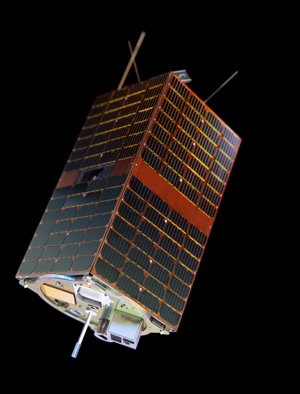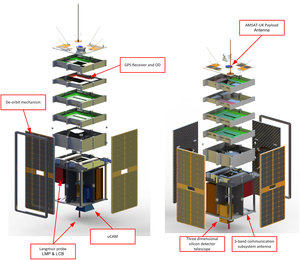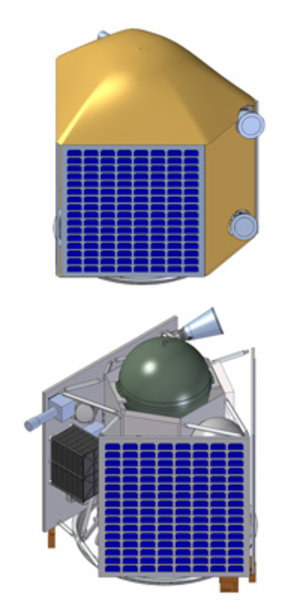Development of the ESEO student satellite gets under way
The contract for the development of the European Student Earth Orbiter (ESEO) satellite, covering Phase B2, Phase C/D, and support to the launch campaign, got under way on 27 November 2008.
ESEO is the second micro-satellite mission within ESA’s Education Satellite Programme. It builds upon the experience gained with the SSETI Express micro-satellite (launched into low Earth orbit in 2005) and the YES2 student experiment (flown on the Foton-M3 mission in September 2007).
The primary objective of the ESEO project is to provide students with challenging, hands-on, space project experience across all disciplines and throughout the full project life cycle, in order to fully prepare a well qualified space workforce for the future.
Change of approach
The contract for the development of ESEO marks a change with respect to the approach previously followed by the ESA Education Projects unit. For the first time, the students who will design, integrate, test and operate the spacecraft will be coordinated by their professors (coming from a network of 11 European universities), and the overall development effort will be under the control of an industrial contractor, Carlo Gavazzi Space.
This change of approach is expected to help in limiting the consequences deriving from drawbacks typically experienced in the development of student satellites, such as high turnover in the student project team, which causes sudden lacks of expertise and discontinuity in the development efforts, limited familiarity with systems engineering in the student team, and lack of adequate standards of quality control. The new approach is expected to help the students to acquire more quickly an engineering vision closer to an industrial perspective, thanks to the cross-fertilisation expected between the academic/student environment and industry.
ESEO mission
The ESEO mission objectives are to:
- Take pictures of the Earth and/or other celestial bodies for educational outreach purposes;
- Measure the radiation environment in Earth orbit;
- Test technologies for future educational satellite missions.
The latter objective mainly relates to student-built technologies that would be relevant for use on the European Student Moon Orbiter (ESMO), the third small satellite mission in the ESA Education Satellite series and the follow-on to ESEO.
The capability to ensure more global radio coverage for the satellite’s operation will be achieved through cooperation with AMSAT, the Radio Amateurs Satellite organisation, which has already cooperated with a few ESA missions in the past. The Massey University of New Zealand, which has previously cooperated with some of the European Universities currently involved in ESEO, will also provide support through their ground station.
Although the ESEO launcher has not yet been selected, the possibility of using one of the VERTA qualification flights of ESA’s new Vega launcher is under consideration. .
The project schedule foresees Phase B2 lasting one year, then a 2 year-long Phase C/D, followed by the launch campaign, with launch expected to take place in 2012.
The first major event of the ESEO project will be a workshop at the ESA-ESTEC Concurrent Design Facility in the week 15-19 December 2008, involving students from all of the university teams.








